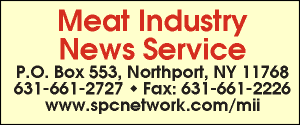
020727 FDA to Require Trans Fat LabelingJuly 12, 2002Washington - Americans trying to avoid artery-clogging trans fat could find it listed on food labels by next year. Christine Lewis Taylor, labeling chief of the Food and Drug Administration, said Wednesday a final rule requiring that the amount of trans fat be listed could be completed by this fall or early next spring. Her announcement followed the release of a report from the Institute of Medicine concluding that there is no safe level of trans fat in the diet and urging people to reduce its consumption as much as possible. That report "really underscores the relationship between intake of trans fat and increased risk of heart disease," Taylor said. "Therefore, providing some kind of information on the label is important for consumers." Walter C. Willett of Harvard University, who has been active in the study of fats in the diet, called the IOM report "right on target" and welcomed the FDA's decision to act quickly. "The sad fact is many people trying to make healthy food choices are often unwittingly eating foods that are high in trans fat because it's not on the label, and some food manufacturers have replaced saturated fat with trans fat to try and make their foods look healthier," Willett said. Because it is directly associated with the bad LDL cholesterol and heart disease, the only safe amount of trans fat in the diet is none, the Institute of Medicine, a branch of the National Academy of Sciences, said. But since trans fat occurs in meat, dairy products, pastries and many other foods, eliminating it altogether would mean such extraordinary changes in diet for many people that they might not get enough protein or nutrients, the Institute added. Since it considers no amount safe, the Institute declined to list an upper limit for trans fat in the diet. It's that limit that FDA uses to establish the recommended daily value for any part of the diet. That means the FDA will require food producers to list the grams of trans fat on the label with other nutrition facts, but it will not include the percent of daily value, Taylor explained. The FDA began working on ways to include trans fat on labels in 1999. Last year John D. Graham, the regulatory chief at the Office of Management and Budget, urged the agency to act quickly. The private Center for Science in the Public Interest has been pressing for inclusion of trans fat on labels since 1994. "This is the first attempt by a panel of experts to set a safe intake for trans fat ... what's surprising is they concluded the only safe intake of trans fat is zero," said Margo Wootan, director of nutrition policy at CSPI. She suggested a combined listing of trans fat and saturated fat with a combined daily upper limit. Both types of fat have been shown to contribute to heart disease. Taylor agreed there are many reasons to be worried about both those fats in the diet, but said they won't be combined on the labels. There will be a separate line for trans fat. Rather that trying to recommend a limit on consumption of trans fat, the IOM report said it should be "as low as possible while consuming a nutritionally adequate diet." The FDA has previously estimated that listing trans fat on food labels would save between 2,000 and 5,600 lives a year as people either chose healthier foods or manufacturers improve their recipes to leave out this fat. Currently the only way to determine if a food contains trans fat is to look for "hydrogenated" on the ingredient list. The most common source of trans fat is partially hydrogenated vegetable oil, in which liquid oil is turned into a solid. This material is included in thousands of foods. Typically, the harder a margarine or cooking fat, the more trans fat it includes. The National Academy of Sciences is an independent organization chartered by Congress to advise the government on scientific matters.
E-mail: sflanagan@sprintmail.com |

